Case Study: Attic Insulation - Portland, Oregon
If you’re like most people, you don’t think about your attic very often.
Do you know what it looks like up there? If you don’t have enough insulation, adding insulation is the most cost effective upgrade most people can do to bring down their energy bills and even out temperature differences.
The EPA estimates that air sealing and insulation save an average of 15% on heating and cooling costs.
What does an attic insulation project include? You’ll find a case study below, complete with before and after photos as well a breakdown of costs and cash incentives. If you have questions about your home, start by giving us a call at 541.330.8767 or send us a message anytime.
Where It Started: Failed Furnace, No Attic Insulation
Carol had just moved into her 1954 home in Portland, Oregon. She knew it needed work, but … then the gas furnace started spewing carbon monoxide into her home.
It had to go. That’s when Carol reached out to GreenSavers at 541.330.8767.
“I knew right away that I was in good hands. I was really impressed with their thoroughness.”
When we came out, we found that Carol had almost no insulation in her attic. If Carol had gotten a new heat pump without ever adding attic insulation, it would have been like getting a new jacket without ever zipping up. She would never feel entirely comfortable, and her energy usage would have been through the roof (literally).
Before Adding Attic Insulation - Portland, OR
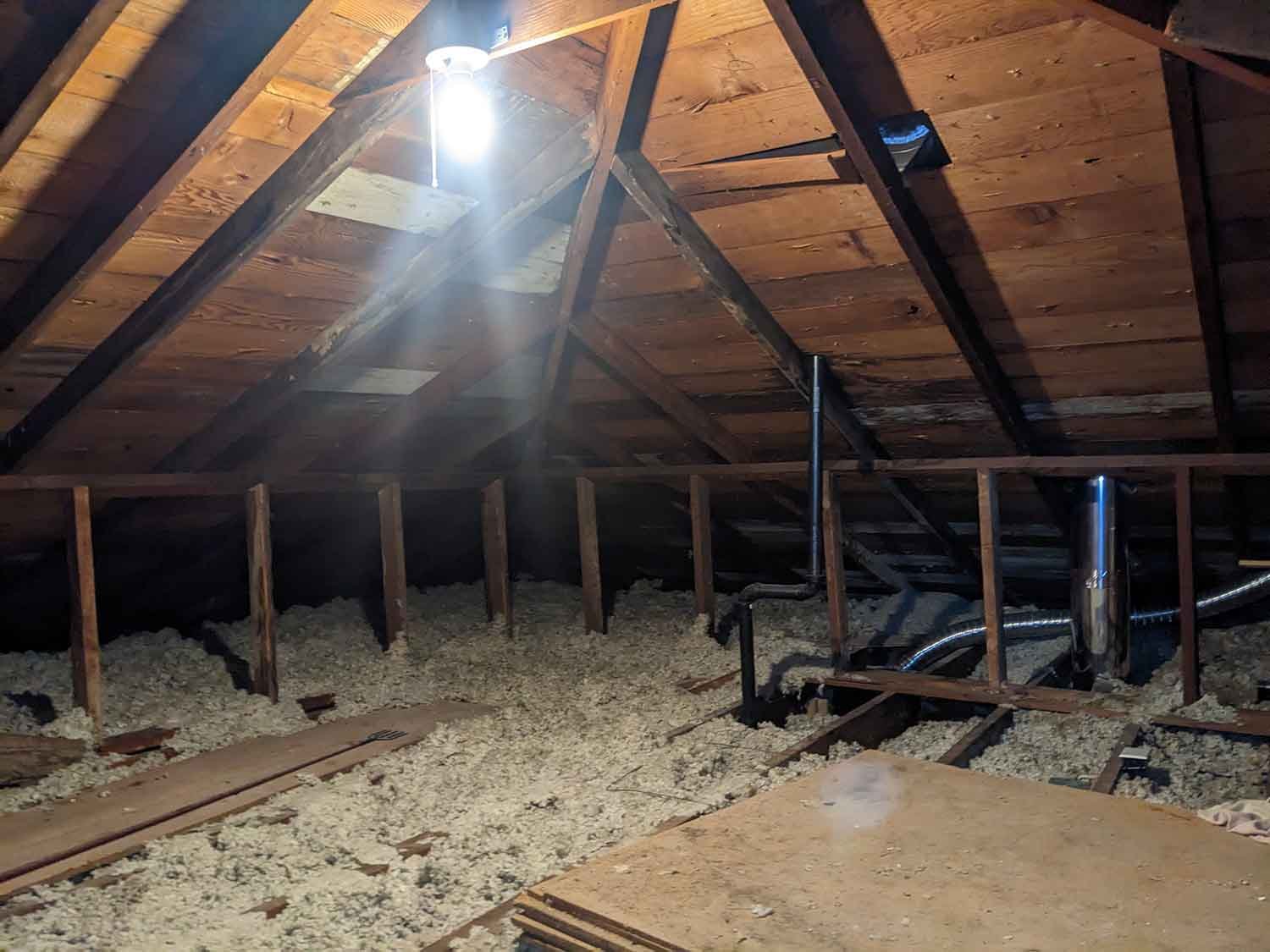
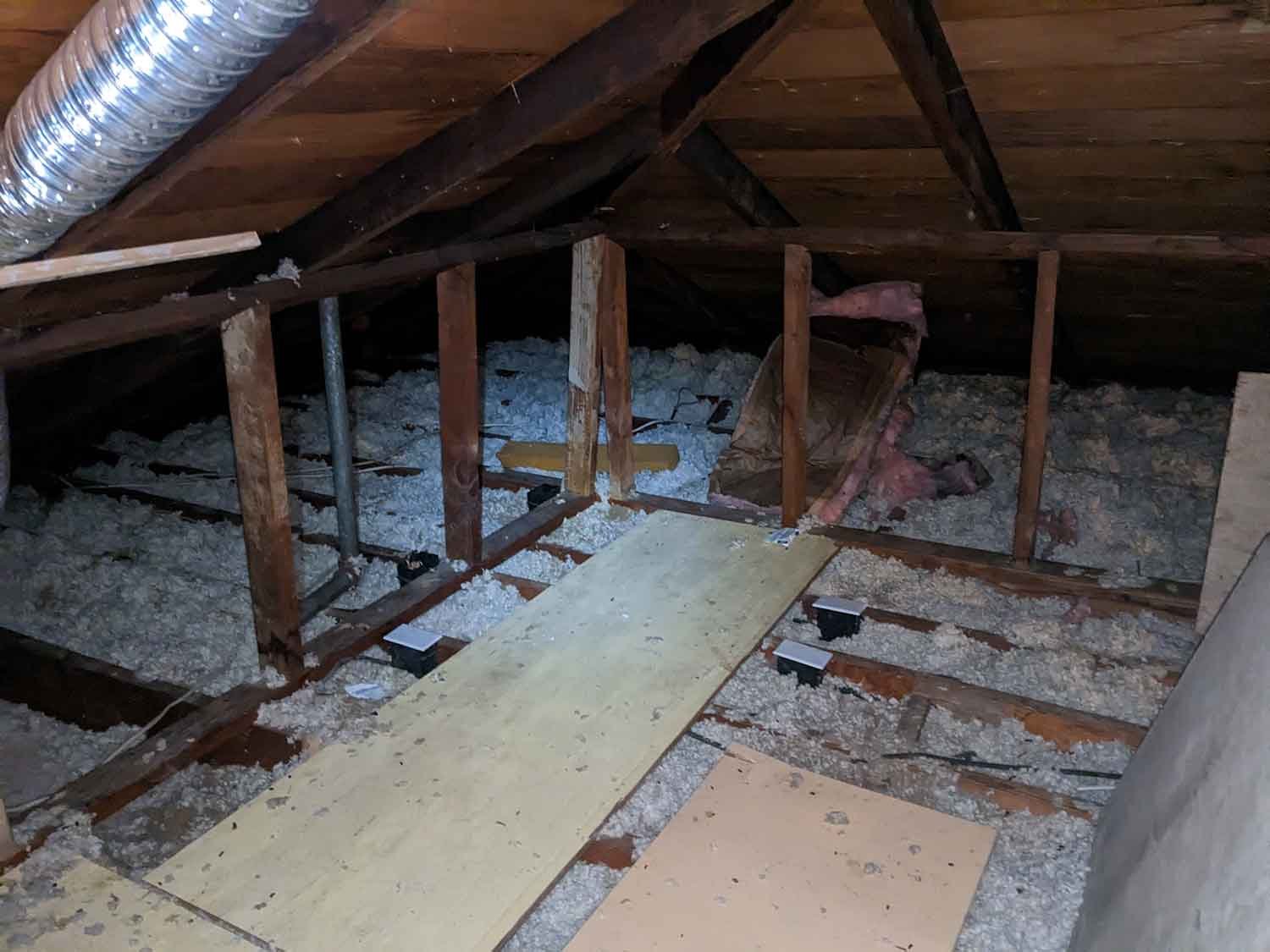

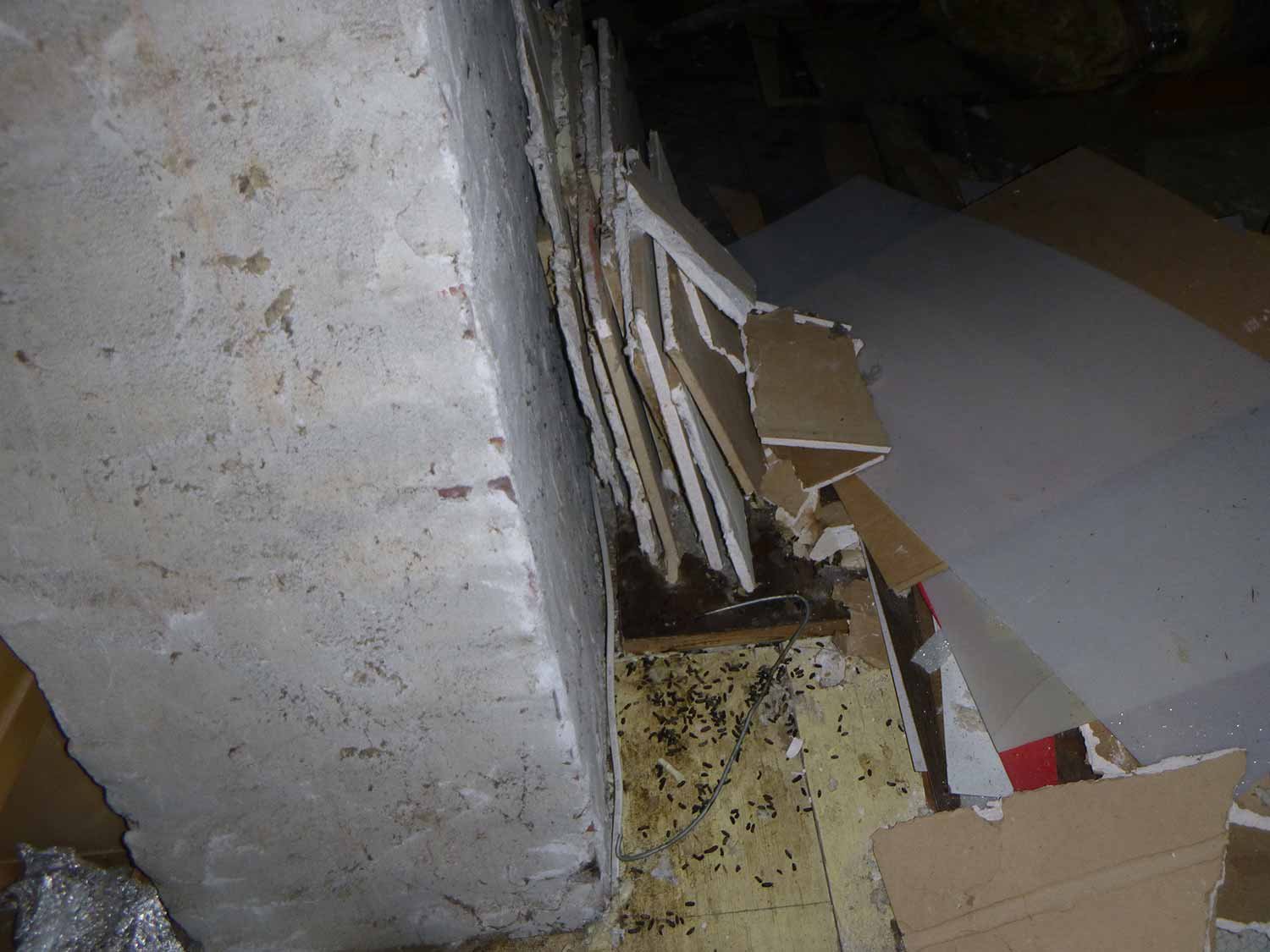
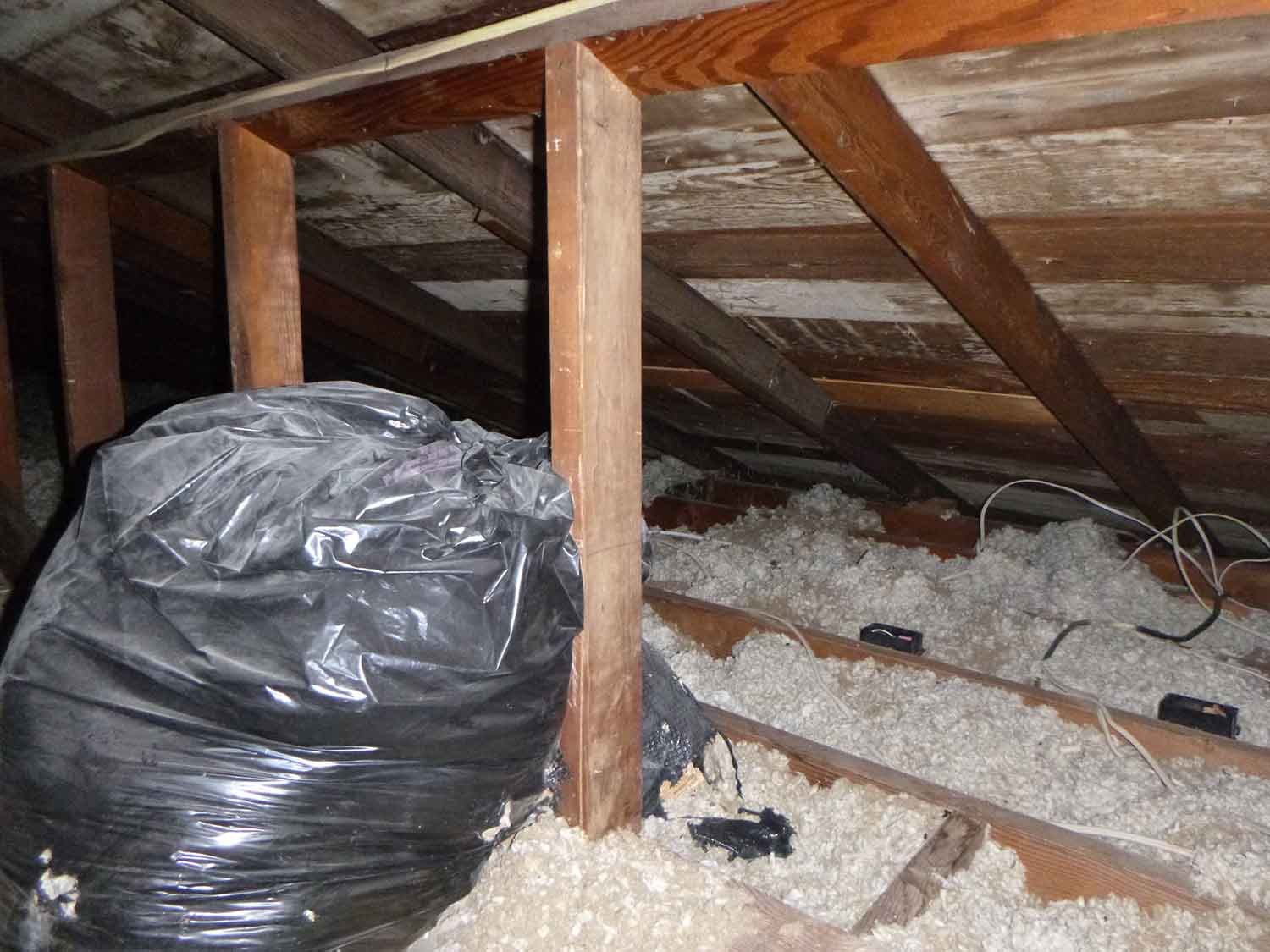
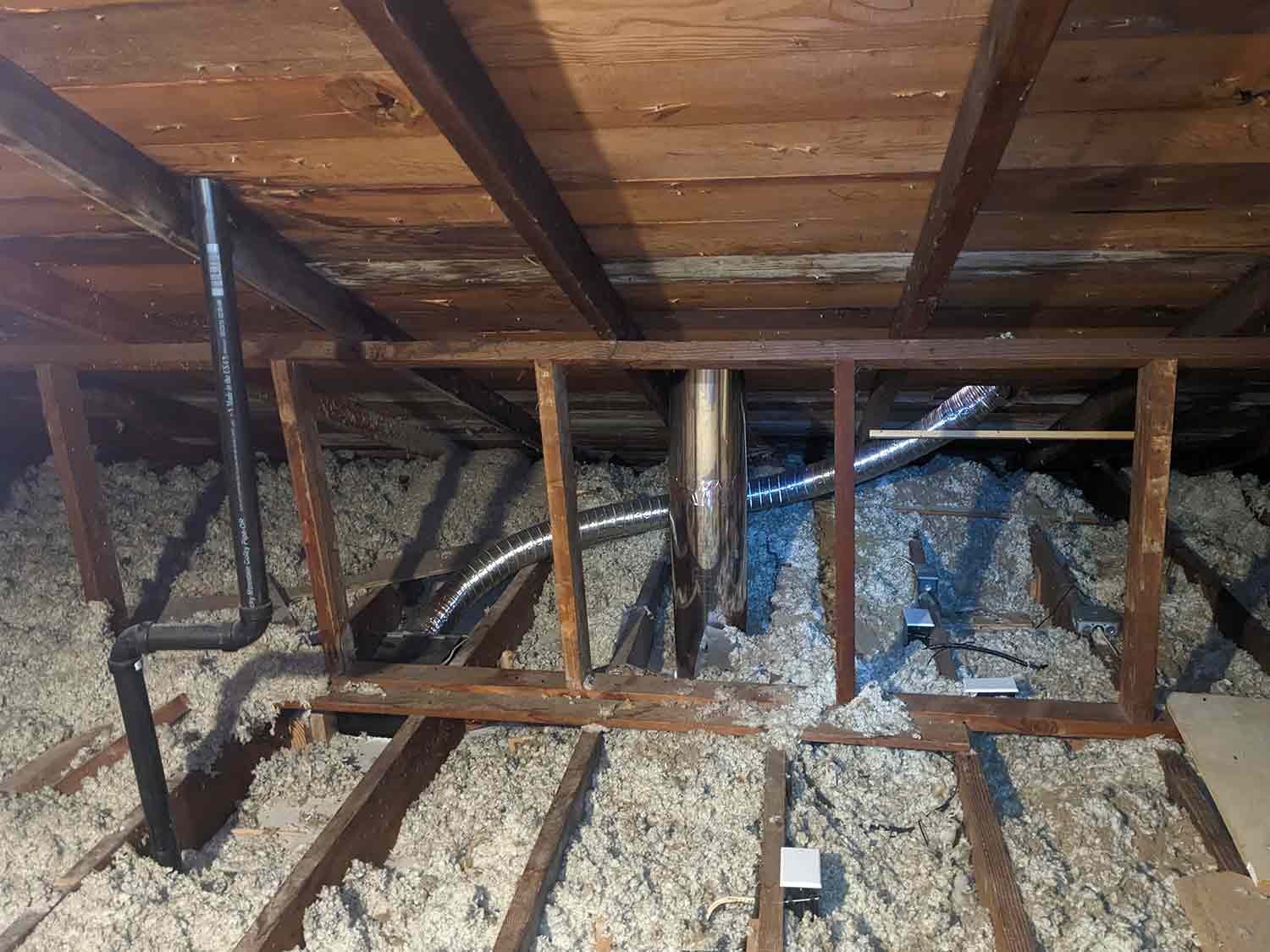
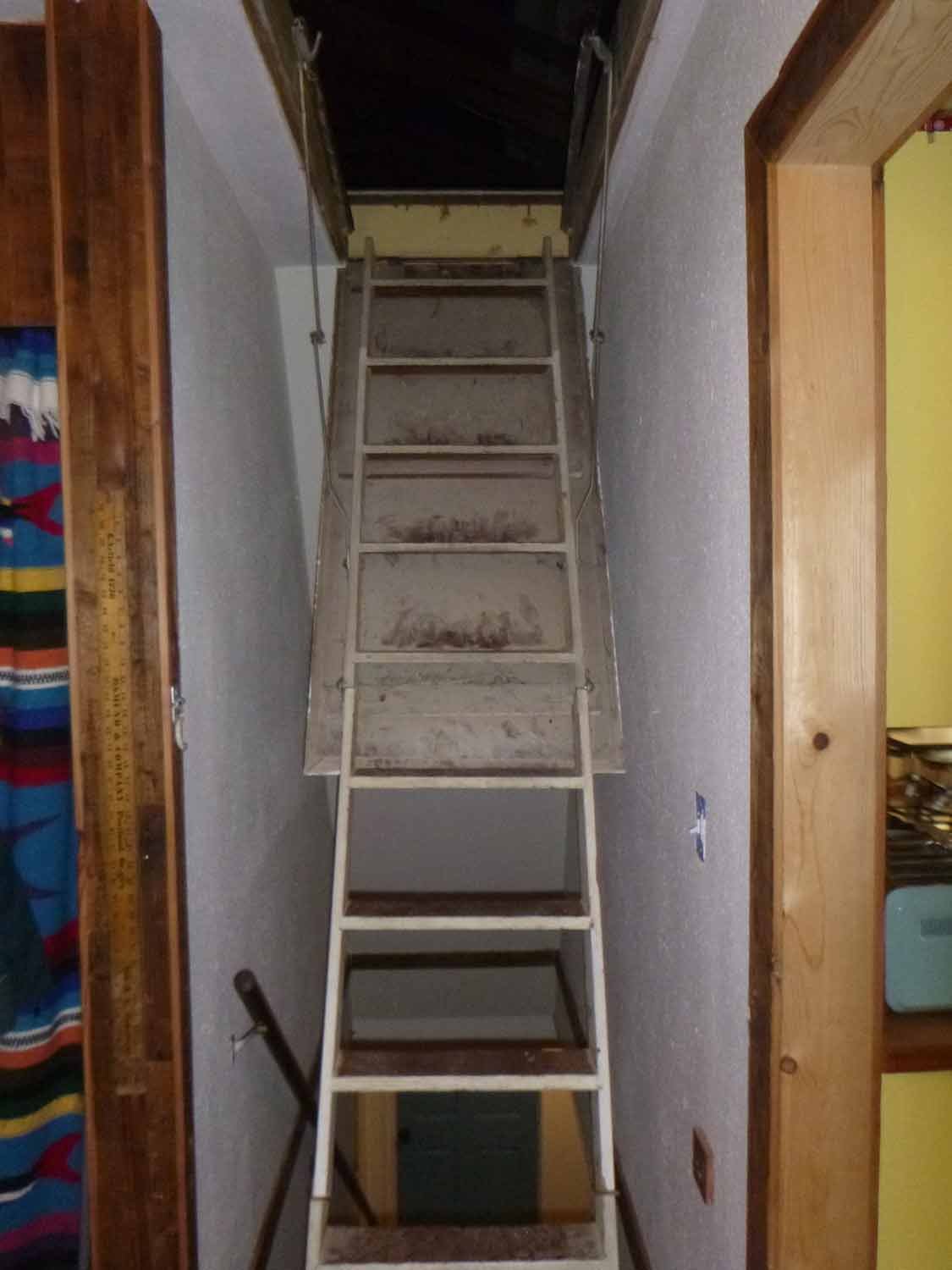
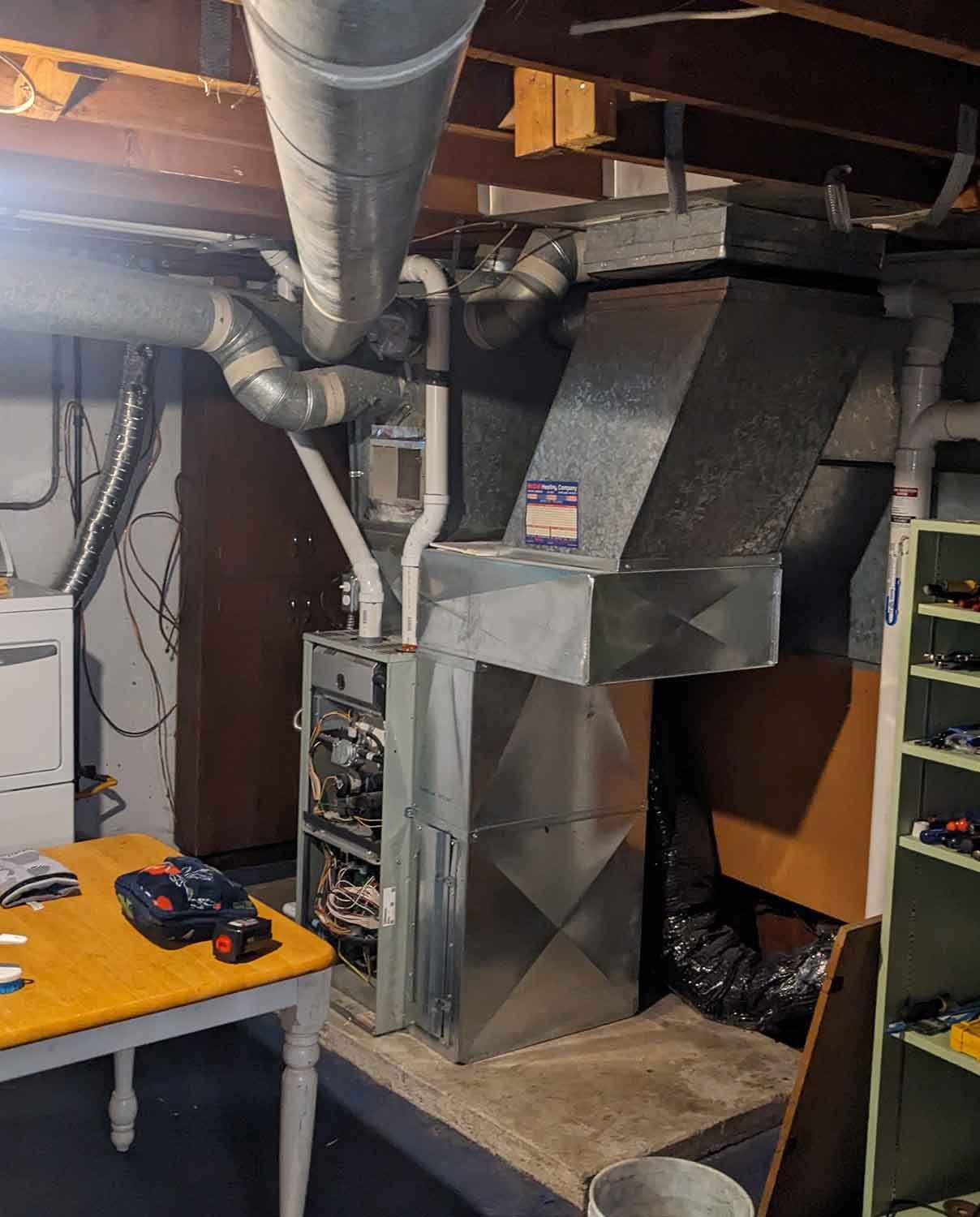
Step #1 for Attic Insulation in Portland: Out with the Old
Before we could seal air leaks and add new insulation, we first needed to remove the old insulation and debris. If you don’t remove the old insulation, you won’t be able to find the air gaps or other issues that can degrade the performance of the new attic insulation that you install.
For Carol’s project, we started out by removing and disposing of the decking and debris. We then used an insulation removal vacuum to suction out the original insulation materials and process them per EPA guidelines. We also found evidence of a substantial rat infestation, which we helped Carol to address.
Remove old Attic Insulation and Debris
Step #2 for Portland Attic Insulation: Seal Air Leaks
After clearing away the old insulation and debris, we sealed up air gaps - the places where air escapes and enters - such as around electrical wires, heating and cooling ducts, plumbing pipes, wall joints, chases, and recessed lighting fixtures.
By sealing air gaps, we create a barrier between the air in the home and the air in the attic. This is important for a few reasons:
Air Quality: Remember the rat infestation we found in the attic? If you don’t have a clear boundary between the the air in the home and the air in the attic, then you’ll inevitably breathe trace amounts of the air in the attic, including feces from pests and particulates from the insulation.
Energy Savings and Comfort: When we seal air gaps, then more of the conditioned air in your home (the air that you pay to heat and cool) stays in your home rather than escaping through the gaps.
Perhaps the biggest gap of all is the access hatch - the place where you enter and leave the attic. At Carol’s house, we built a wooden frame around the attic hatch and installed a cover that fit tightly over it. The cover had weatherstripping around the edges to seal any gaps.
We also added fiberglass insulation on top of the cover to increase its thermal resistance. The insulation was wrapped with a durable material that prevented it from getting damaged or touched by anyone coming or going. That’s how we created a clear boundary between the living space and attic, including the attic hatch.
Air Sealing and Securing the Attic Hatch
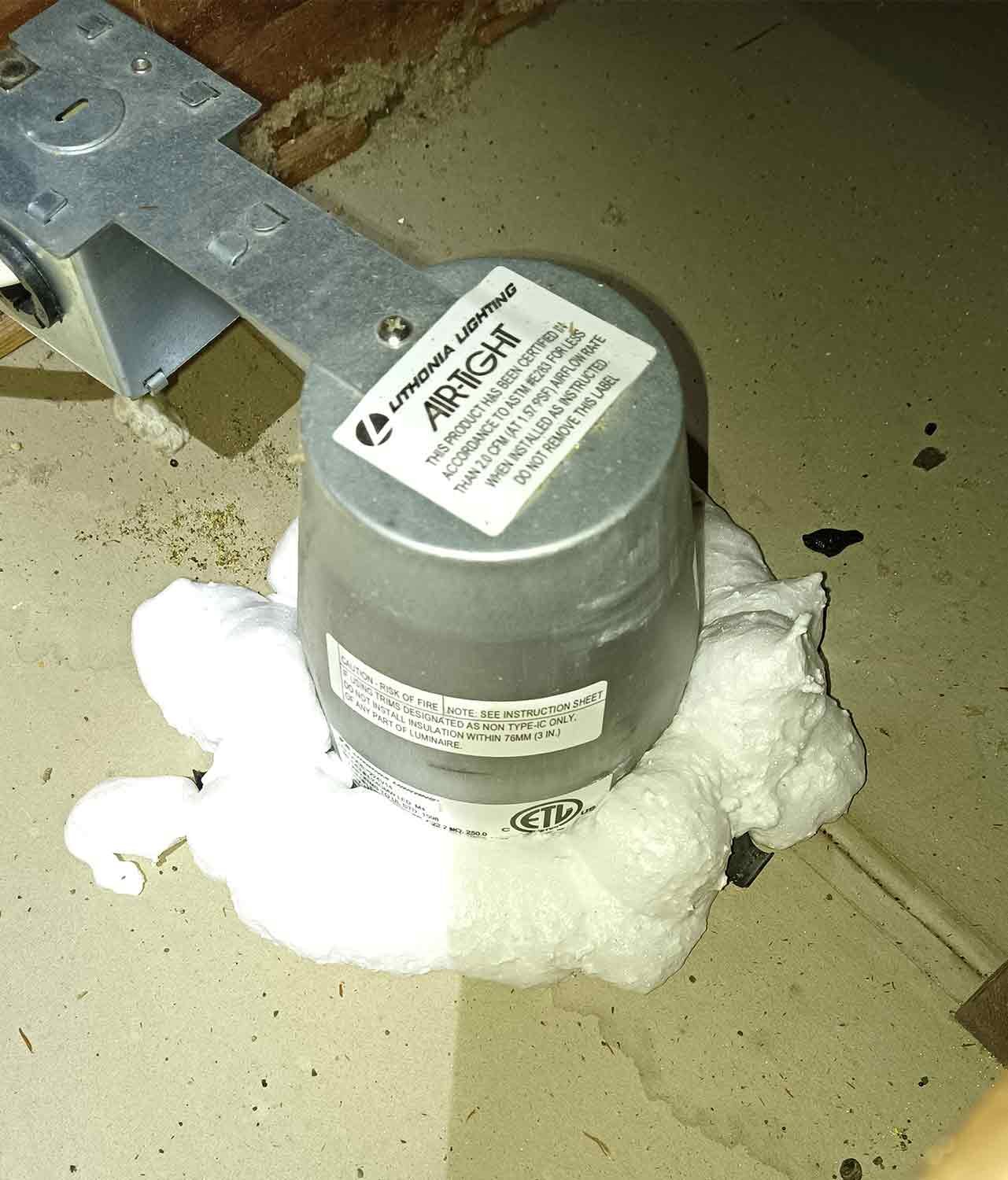
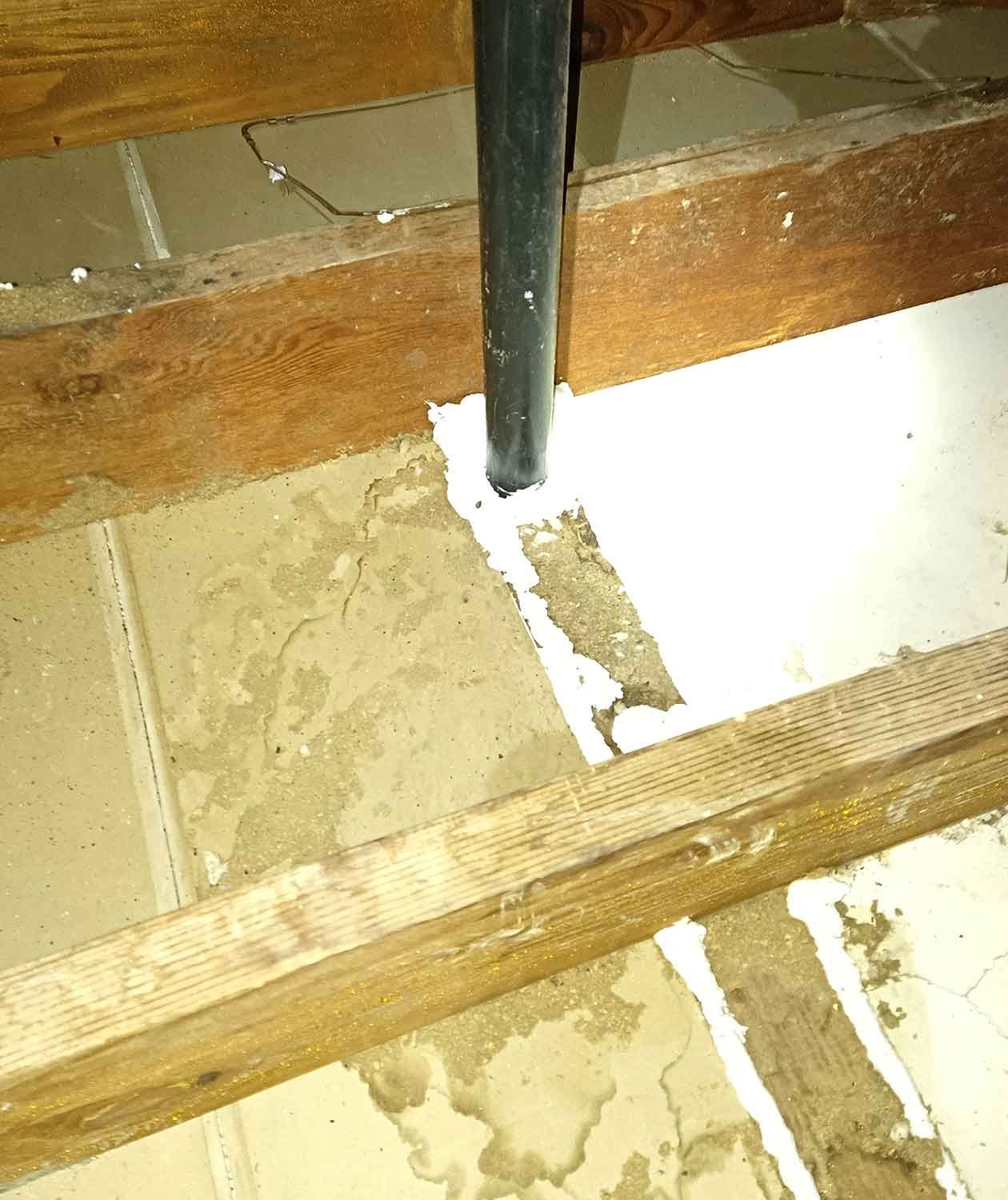

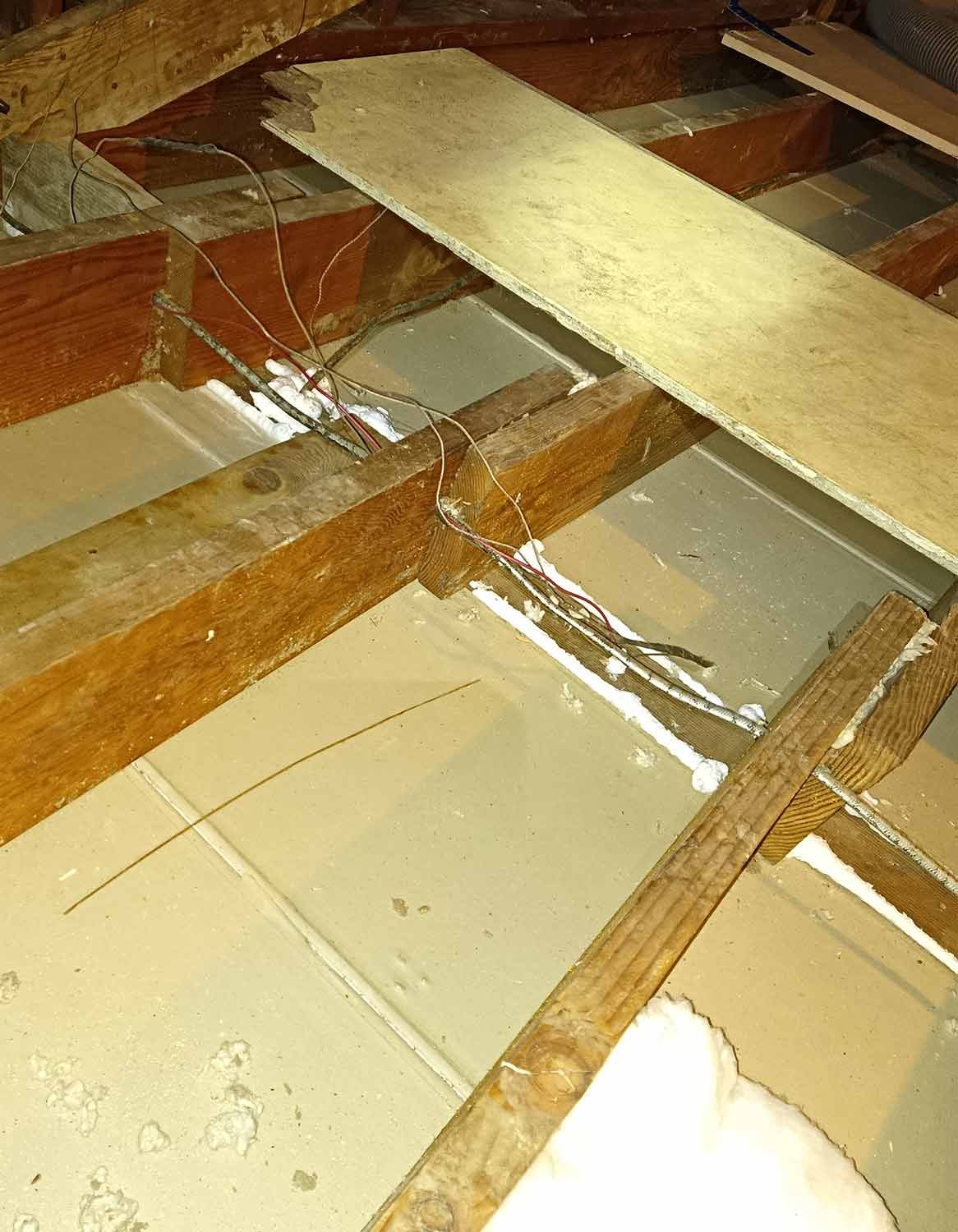
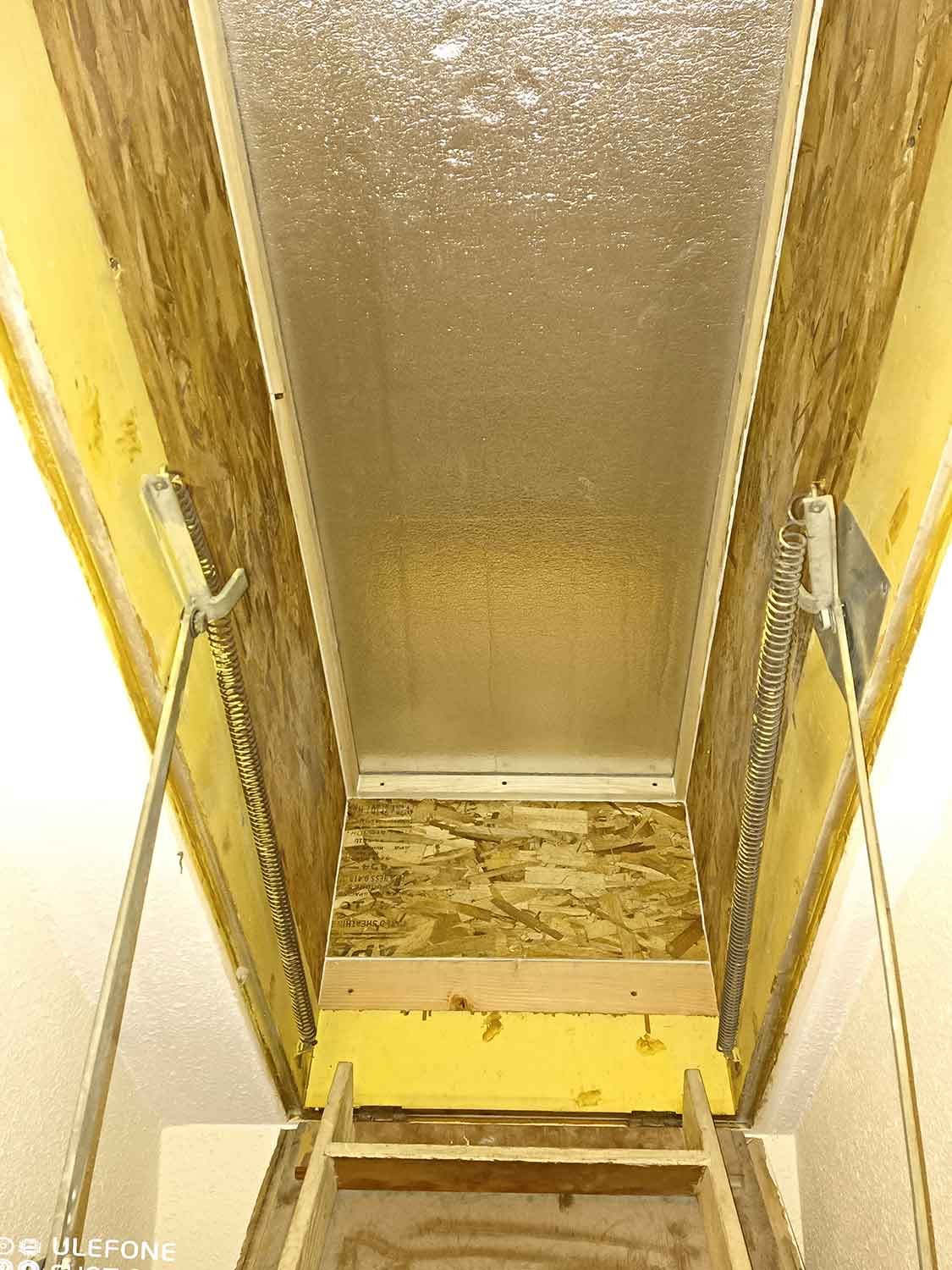
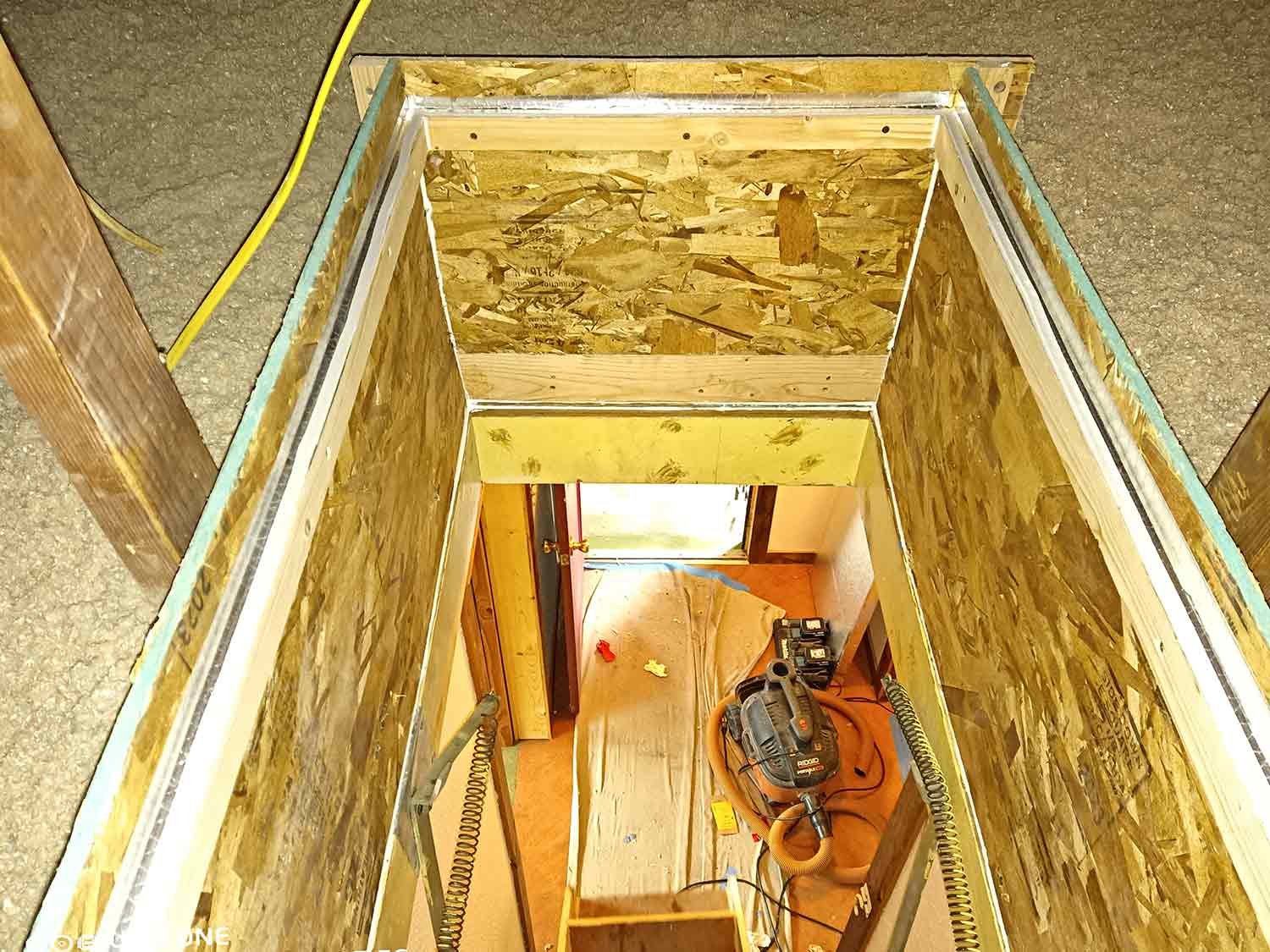
Step #3 for Attic Insulation in Portland: Ventilation
Next, we added four roof vents - two lower and two higher on the rear roof of Carol’s house. Why is ventilation critical to any Portland attic insulation project?
First off, ventilation helps prevent moisture buildup in the attic, which can cause mold, rot, and damage to the roof and insulation.
Second, ventilation helps regulate the temperature in the attic, which can have a dramatic effect on the overall comfort of the home. In the summer, ventilation allows hot air to escape, reducing cooling costs and shingle damage, and in the winter, attic ventilation helps to keep the attic cold, which reduces heat loss and prevents ice dams from forming. Ice dams are less of a concern in Portland but can cause serious issues in Central Oregon.
Roof Vents to ventilate the insulated attic
Step #4 for Portland Attic Insulation: Time to Blow
Next up: Install the insulation.
For Carol’s project, we used loose fill cellulose insulation to achieve a uniform R60 rating. Cellulose insulation is made from recycled paper fibers that are treated with a fire retardant and insect repellent.
There are a couple reasons that we generally recommend cellulose for attic insulation projects:
Cellulose has a relatively high R-value of 3.7 per inch, which means it can resist heat transfer better than most fiberglass or rock wool insulation.
It also fills in any gaps or irregularities in the attic floor, creating a consistent thermal barrier that helps to prevent air leakage and heat loss.
R60 is the recommended insulation level for attics in Portland according to the ENERGY STAR guidelines. To achieve R60, we blow in a consistent layer of 15 to 20 inches of cellulose insulation across the attic floor.
Blown In Cellulose Insulation
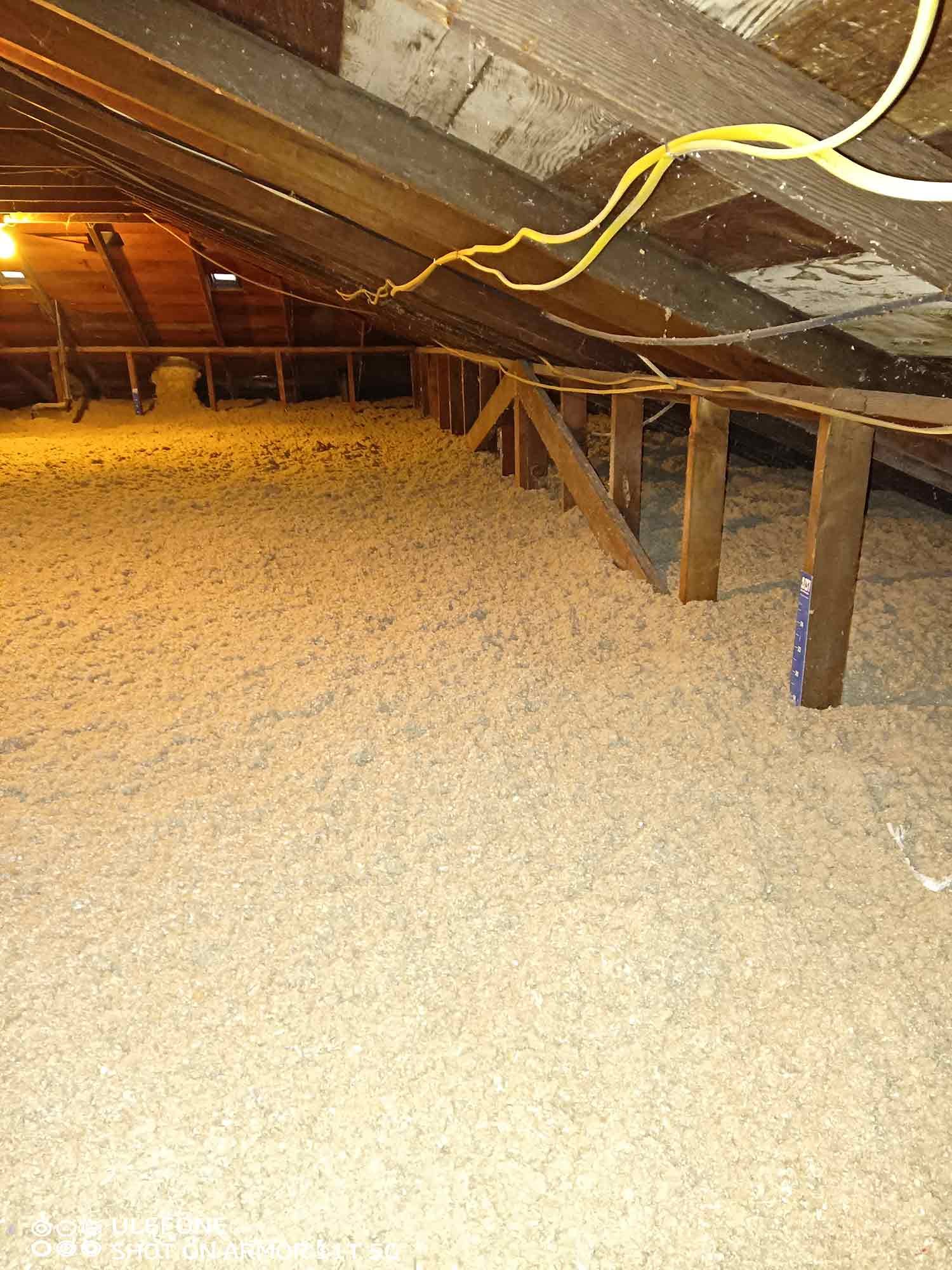

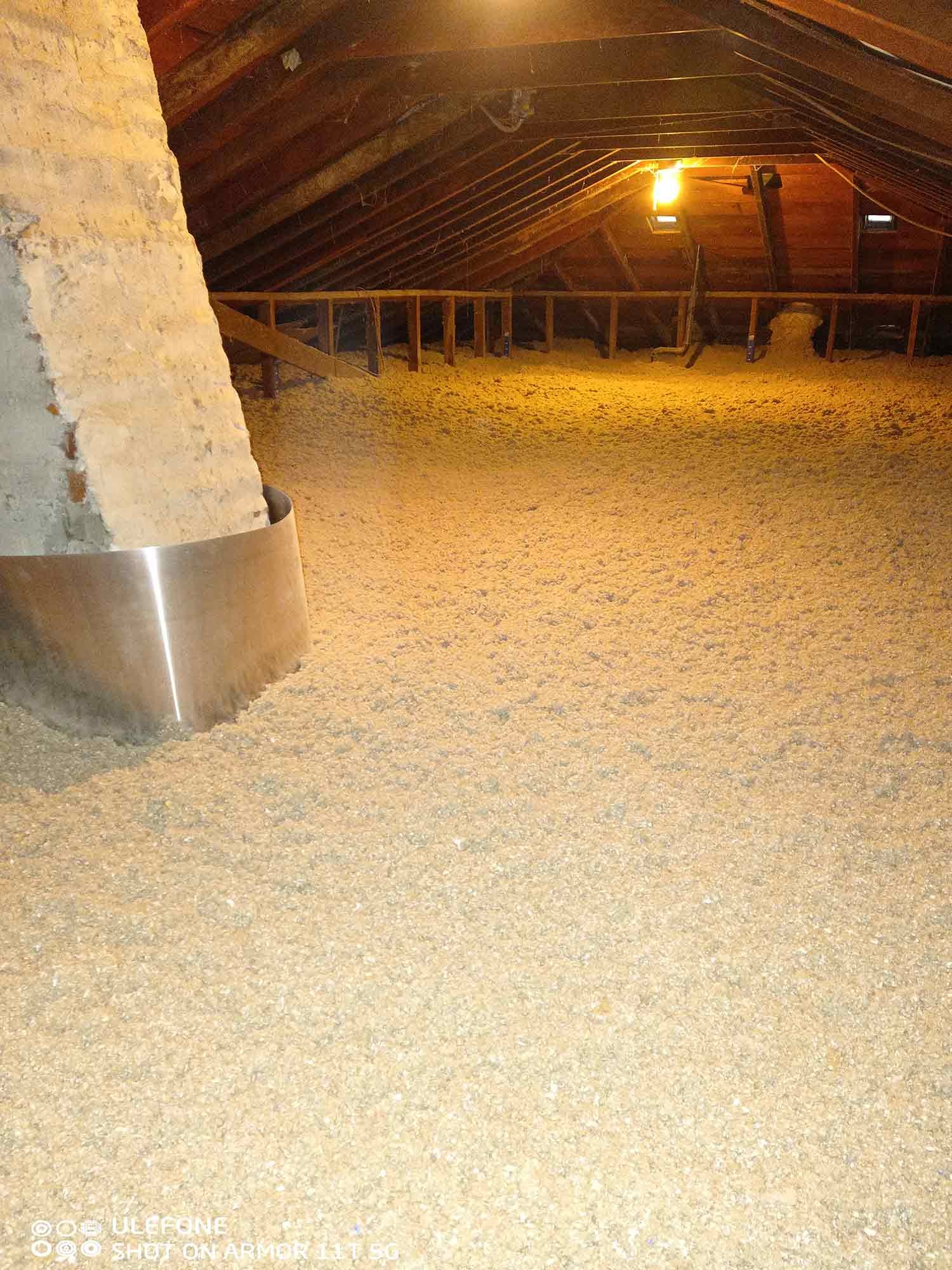
“There were inspections both before and afterwards to ensure everything was working properly ...The level of professionalism was unmatched. And the people there couldn’t be nicer.”
How Much Does Attic Insulation Cost in Portland?
Please note that pricing, incentives, and tax credits are subject to change. That said, attic insulation projects are often more affordable than most people realize. Here’s a breakdown of the pricing for Carol’s project in 2023:
Total Cost: $5,345
Cash Incentives: -$1,920
Estimated Federal Tax Credit: -$1,200
Net Cost: $2,225
Estimated Monthly Payment (more on financing options) $40.45
How Did the Project End Up?
“If I set the thermostat at 68, that’s where it stays. It’s been very comfortable. I just had 40 friends over, and the AC kept everyone cool.”
Carol’s attic insulation is performing exactly as it should - keeping her home cooler in the summer and warmer in the winter. The best part? Carol combined her attic insulation with a new heat pump and rooftop solar. She has had almost no energy costs since she completed her project with GreenSavers.
If you have questions about your home, please don’t hesitate to get in touch: 541.330.8767.
Learn More about Home Insulation
Start by visiting our insulation resource pages for homeowners in Portland or Bend, Oregon. You can also keep reading our latest blog articles about insulation and hiring insulation contractors.













